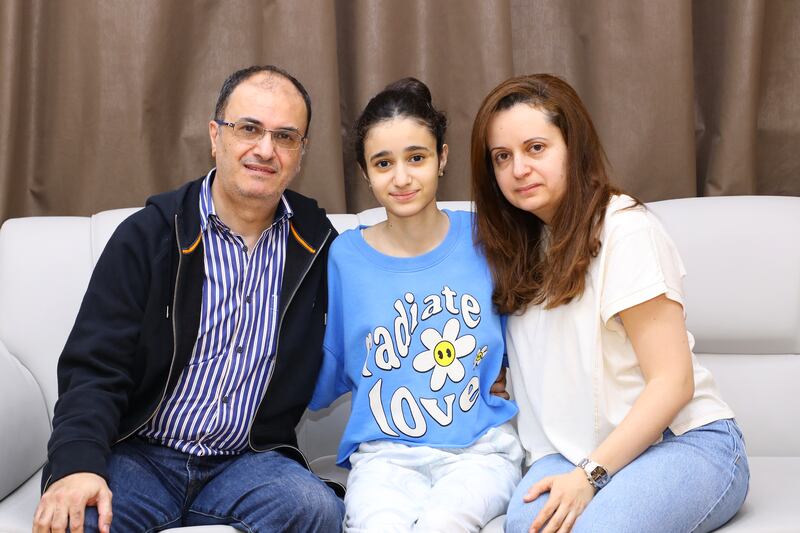A Dubai schoolgirl born with a spinal deformity is the first in the UAE to benefit from a non-invasive corrective procedure to stop a progressive condition that would have worsened as she grew.
The first vertebral body tethering operation was performed on Salma Naser Nawayseh, 13, on Saturday at Burjeel Hospital in Dubai.
The Jordanian teenager was diagnosed with scoliosis in April, when her parents first noticed an unusual curve in her spine. The condition typically appears as children grow into their teens.
Due to her condition, Salma suffered a deformity of the back with a shortening of the trunk, a lower back hump, an unlevelled pelvis and back pain that stopped her playing sports and moving freely.
The innovative procedure uses a flexible cord rather than metal rods to straighten the curvature of the spine.
“As opposed to spinal surgeries that involve cutting into the back and manipulating the spinal cord and nerve roots, in this surgery we make discreet incisions in the abdomen through the endoscope,” said Dr Firas Husban, a consultant orthopaedic surgeon.
“The tether puts pressure on the outside, allowing the inside of the spinal curve to grow.
“Because VBT is minimally invasive, there is little trauma to the delicate tissues of your back.
“As a result, there is less blood loss, less post-operative pain and speedier recovery time.”
After two weeks, Salma will be able to go back to school and after four weeks return to full activity with no restrictions and start playing sports again.
Usually, doctors would have to correct the condition with spinal fusion surgery by inserting metal screws and rods.

The procedure limits mobility and growth, so specialists looked at an alternative minimally invasive procedure that is new to the UAE.
The vertebral body tethering was approved in 2019 in the US, and uses discreet incisions in the abdomen through an endoscope to fix a flexible cord to the spine.
The tether costs about $45,000 and is applied to the outside of the curve through bone screws, then tension is applied to straighten the spine.
It allows for faster recovery, continued growth without a fusion procedure and also preserves motion and flexibility.
While scoliosis affects 2 to 3 per cent of the population, most cases are mild and do not require invasive treatment.
If left untreated, however, moderate to severe scoliosis can lead to pain, increasing deformity, as well as potential heart and lung problems.
Corrective surgery is essential in cases such as Salma’s, where patients have large curves of 45 to 65 degrees.
As she had not reached full skeletal maturity yet, she was the perfect candidate for the procedure, and was able to walk days after the operation.
Her parents hope she can soon get back on to the tennis court to get back to playing the sport she loves.
“Salma started walking the second day after surgery,” said her father, Naser Nawayseh.
“We are happy that our daughter was eligible for this surgery.
“We look forward to our daughter holding the racket again and resuming tennis."







